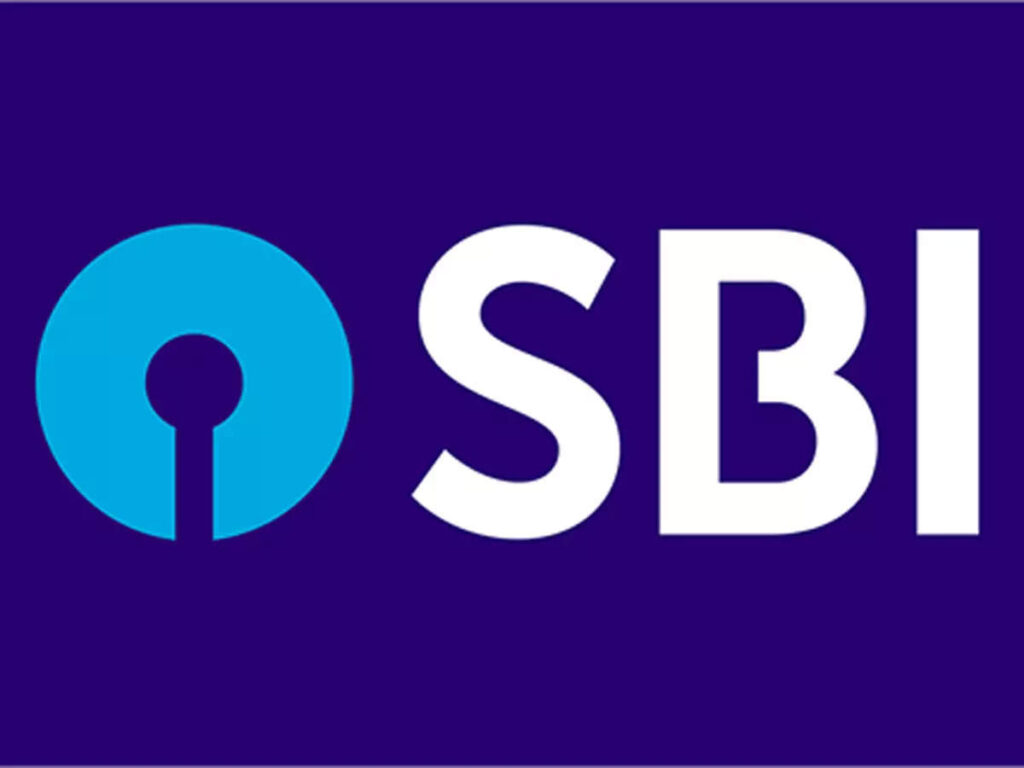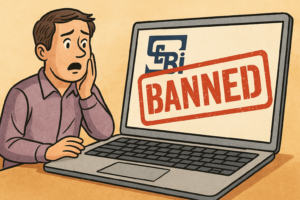In this blog post, we explore the SBI Business Model to explain and understand how the Business Model of SBI is structured and to learn about how SBI makes money.
The State Bank of India (SBI) is one of the oldest and most prominent financial institutions in India. Founded in 1806 as the Bank of Calcutta, it was later renamed the Bank of Bengal in 1809. In 1921, following the merger of the Bank of Bombay and Bank of Madras, the institution transformed into the Imperial Bank of India. Finally, in 1955, the State Bank of India was formed after the Reserve Bank of India acquired a controlling interest in the Imperial Bank of India.
The story of SBI is one of resilience and adaptability in the face of a constantly changing financial landscape. In this blog post, we will explore the business model of SBI using Alexander Osterwalder’s Business Model Canvas, a strategic management and entrepreneurial tool that allows organizations to describe, design, and challenge their business models.
- Value Proposition
SBI’s value proposition can be broken down into four key components: a wide range of financial products and services, an extensive network of branches and ATMs, the trust and credibility of a government-backed institution, and digital innovation.
1.1 A Wide Range of Financial Products and Services
SBI offers a comprehensive suite of financial products and services to cater to the diverse needs of its customers, including retail banking, corporate banking, international banking, agricultural and rural banking, and treasury services. The bank provides savings accounts, loans, mortgages, credit cards, insurance, investments, and remittance services, among others. By offering a one-stop-shop for customers’ financial needs, SBI creates value through convenience and accessibility.
1.2 Extensive Network of Branches and ATMs
With over 22,000 branches and 58,000 ATMs across India, SBI has one of the largest banking networks in the country. This wide network enables customers to access banking services easily, even in remote areas. Additionally, SBI’s international presence, with branches in over 30 countries, allows the bank to provide seamless banking services to customers traveling or residing abroad.
1.3 Trust and Credibility
As a government-backed institution, SBI enjoys a high level of trust and credibility among its customers. In times of economic uncertainty, customers are more likely to turn to SBI for their financial needs, given the bank’s long history and the perceived stability of a government-owned bank.
1.4 Digital Innovation
Recognizing the importance of digital transformation in the banking industry, SBI has embraced technology to offer a seamless and convenient banking experience to its customers. Through its digital platforms like YONO (You Only Need One), customers can access a wide range of banking services, including account management, fund transfers, bill payments, and online shopping, all through a single app.
- Customer Segments
SBI caters to a diverse customer base that can be segmented into retail customers, corporate clients, and government entities.
2.1 Retail Customers
SBI’s retail customers include individuals from all walks of life, including salaried employees, self-employed professionals, business owners, students, and senior citizens. The bank offers a wide range of products and services tailored to meet the specific needs of these individuals, such as savings accounts, personal loans, home loans, car loans, education loans, credit cards, and insurance products.
2.2 Corporate Clients
SBI serves a wide range of corporate clients, from small and medium-sized enterprises (SMEs) to large multinational corporations. The bank offers customized financial solutions to help these businesses grow and expand, including working capital loans, term loans, trade finance, and cash management services.
2.3 Government Entities
As a government-owned bank, SBI also serves various government entities, such as central and state government departments, public sector undertakings, and government-sponsored organizations. The bank provides customized financial services to these entities, including treasury management, pension and payroll processing, and tax collection services.
- Channels
SBI uses a multi-channel approach to reach its customers, enabling them to access the bank’s products and services through the following channels:
3.1 Branch Network
With its extensive branch network, SBI offers customers the convenience of face-to-face interactions and personalized service. Customers can visit branches to open accounts, apply for loans, make deposits and withdrawals, and seek financial advice from the bank’s relationship managers.
3.2 ATMs
SBI’s vast network of ATMs enables customers to withdraw cash, check account balances, and deposit cash or cheques at their convenience, 24/7.
3.3 Digital Platforms
SBI has embraced digital transformation to offer a seamless and convenient banking experience to its customers. Through its digital platforms, such as YONO, SBI customers can access a wide range of banking services, including account management, fund transfers, bill payments, and online shopping, all through a single app.
3.4 Phone Banking and Call Centers
SBI offers phone banking services and operates call centers to assist customers with their banking needs, such as account-related queries, loan applications, and credit card requests.
- Customer Relationships
SBI focuses on building long-term relationships with its customers by providing personalized service, financial advice, and tailored products to meet their specific needs. The bank invests in customer relationship management (CRM) systems to better understand customer preferences and behavior, enabling it to offer targeted products and services. Additionally, SBI conducts regular customer satisfaction surveys to gather feedback and identify areas for improvement.
- Key Activities
SBI’s key activities include:
5.1 Managing the Bank’s Assets and Liabilities
This involves managing the bank’s loan portfolio, including credit risk assessment, loan disbursement, and recovery. SBI also manages its deposit base, ensuring that it has sufficient funds to meet customer withdrawal demands and regulatory requirements.
5.2 Product Development and Innovation
SBI continually develops new financial products and services to cater to the evolving needs of its customers. The bank also invests in digital innovation to enhance the customer experience and streamline its operations.
5.3 Marketing and Branding
SBI engages in various marketing and branding activities to build brand awareness and attract new customers. These activities include advertising campaigns, public relations efforts, and sponsorship of events.
5.4 Regulatory Compliance
As a financial institution, SBI must comply with a myriad of regulations and guidelines issued by the Reserve Bank of India and other regulatory bodies. The bank invests in robust systems and processes to ensure compliance and maintain its credibility in the market.
- Key Resources
SBI’s key resources include:
6.1 Financial Capital
SBI’s financial capital, comprising its deposits, borrowings, and equity capital, is crucial for funding its lending activities and meeting regulatory capital requirements.
6.2 Human Capital
SBI’s workforce, including its management team, relationship managers, and other employees, plays a critical role in delivering high-quality products and services to its customers. The bank invests in talent acquisition, training, and development to ensure it has a skilled and motivated workforce.
6.3 Physical Infrastructure
SBI’s extensive branch and ATM network, as well as its digital platforms, form the backbone of its service delivery infrastructure. The bank also relies on its data centers and IT systems to support its operations.
6.4 Brand and Reputation
SBI’s strong brand and reputation as a government-backed institution provide it with a competitive advantage in the market and help attract customers and build trust.
- Key Partners
SBI collaborates with various partners to enhance its product offerings and deliver value to its customers. Some of the bank’s key partners include:
7.1 Fintech Companies
SBI partners with fintech companies to leverage innovative technologies and offer cutting-edge financial products and services to its customers. These collaborations enable the bank to stay ahead of the curve in the rapidly evolving digital banking landscape.
7.2 Insurance and Asset Management Companies
SBI has partnered with insurance and asset management companies to offer a wide range of investment and insurance products to its customers. These partnerships help the bank diversify its revenue streams and provide added value to customers.
7.3 Payment Service Providers
SBI collaborates with payment service providers to facilitate seamless transactions for its customers. These partnerships enable the bank to offer a wide range of payment options and improve the overall customer experience.
7.4 Government and Regulatory Bodies
As a government-owned institution, SBI maintains strong relationships with government and regulatory bodies. These relationships are essential for the bank to navigate the complex regulatory environment and ensure compliance with all applicable laws and regulations.
- Cost Structure
SBI’s cost structure can be broadly categorized into the following components:
8.1 Interest Expenses
Interest expenses, including interest paid on customer deposits and borrowings, represent a significant portion of the bank’s costs. SBI must carefully manage its interest expenses to maintain profitability and meet regulatory capital requirements.
8.2 Operational Expenses
Operational expenses include costs associated with running the bank’s branch and ATM network, such as employee salaries, rent, utilities, and maintenance. SBI also incurs costs for its digital platforms, data centers, and IT systems.
8.3 Marketing and Advertising Expenses
SBI invests in marketing and advertising campaigns to build brand awareness and attract new customers. These expenses can include media placement, promotional materials, and event sponsorships.
8.4 Regulatory Compliance and Risk Management Expenses
The bank incurs costs to ensure regulatory compliance and manage risks, such as credit risk, market risk, and operational risk. These expenses include investments in robust systems and processes, as well as fees paid to regulatory authorities.
The State Bank of India’s success can be attributed to its strong value proposition, which is rooted in a wide range of financial products and services, an extensive branch and ATM network, the trust and credibility of a government-backed institution, and a commitment to digital innovation. The bank’s diverse customer segments, multi-channel approach, and focus on long-term customer relationships further contribute to its resilience and adaptability in the face of a constantly changing financial landscape.
By using Alexander Osterwalder’s Business Model Canvas, we have dissected SBI’s business model to understand the key components driving its success, from the value it delivers to customers to the resources and partners it relies on to create that value. This analysis provides valuable insights for entrepreneurs, business leaders, and policymakers seeking to learn from SBI’s remarkable journey and apply these lessons in their own organizations or industries.
Did you know? Corporate teams like to use our coworking space in Bangalore.
Learn more about our coworking space on our YouTube channel Work Theater Studios where we talk about a variety of topics including personal finance, entrepreneurship, business and life.
Did you know? We also have a private theatre in Bangalore.




